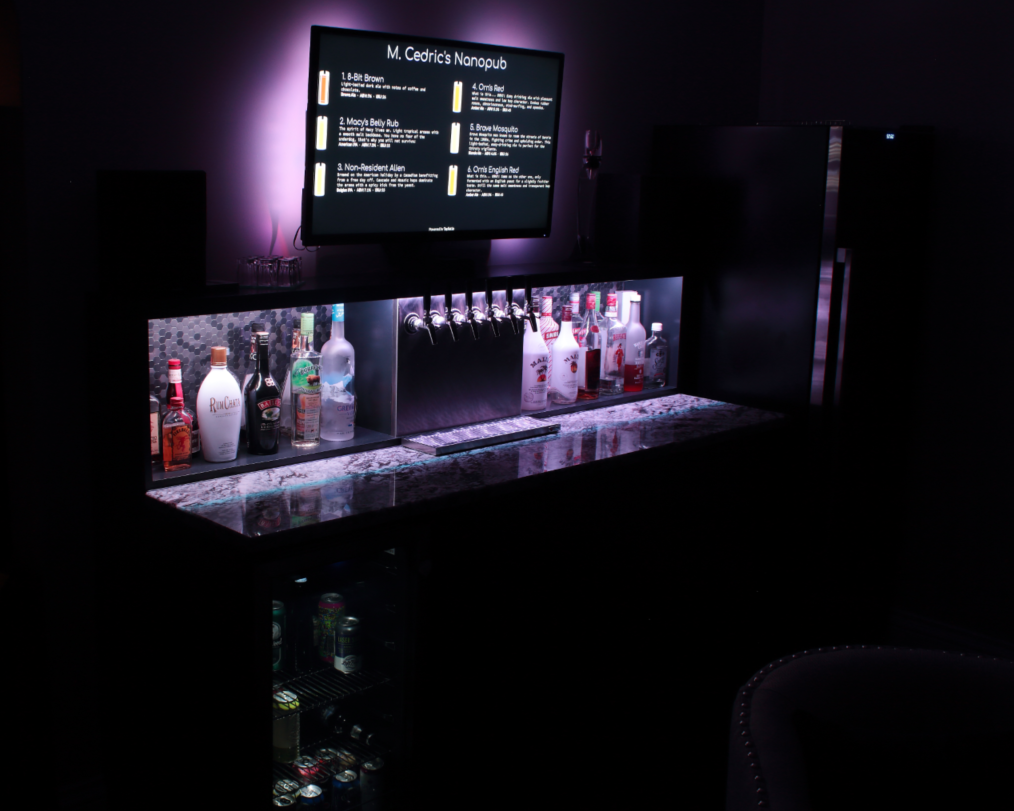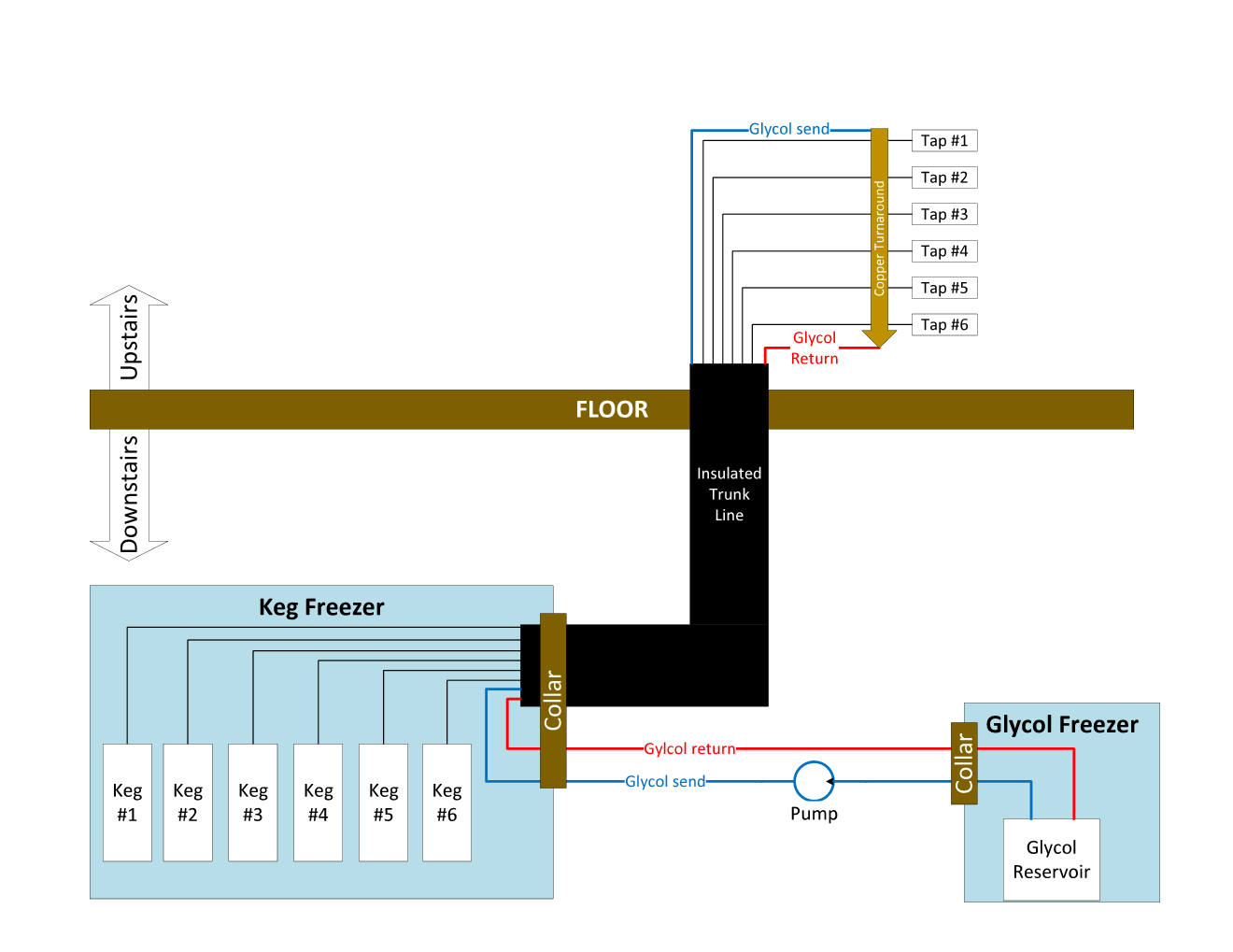- Joined
- May 15, 2015
- Messages
- 703
- Reaction score
- 453
I started kegging in early 2018. Initially, I had a beat-up old fridge that I converted to a 4-tap kegerator, which served me well for about 18 months. But it was kind of unsightly and was therefore relegated to a dark corner of our unfinished basement. I really wanted a way of serving the beer upstairs, mostly because I was finding that guests just don't like to climb stairs, even if it means free beer. Unexpected, but true.
I considered a coffin-keezer type project but I just couldn't come up with a design I liked. The problem, to my eye at least, is that the physical dimensions of chest freezers don't quite look right as furniture that will go in the upstairs room that I had to work with. So, I decided to put the kegs in the basement and just build a walk-up bar.
Features:

It's been a few hundred hours to get this thing running, but here we are. The glycol-cooled line was a pretty big headache, but I'm able to get first pours with a ~2-finger head. I'm still dialing things in a bit, but I'm pretty happy with it so far. I've learned a lot, that's for sure. If I had to do it again, it would go much smoother.
When I get a chance, I'll post some photos of the downstairs setup. Cheers

I considered a coffin-keezer type project but I just couldn't come up with a design I liked. The problem, to my eye at least, is that the physical dimensions of chest freezers don't quite look right as furniture that will go in the upstairs room that I had to work with. So, I decided to put the kegs in the basement and just build a walk-up bar.
Features:
- (6) Perlick 650SS flow-control faucets
- Total run length from kegs to taps: ~18ft, which includes a vertical lift of ~10ft.
- Insulated, glycol-cooled trunk line
- Digital beer list on 38" TV, powered by Taplist.io
- Integrated beer fridge
- 75" x 15" granite top

It's been a few hundred hours to get this thing running, but here we are. The glycol-cooled line was a pretty big headache, but I'm able to get first pours with a ~2-finger head. I'm still dialing things in a bit, but I'm pretty happy with it so far. I've learned a lot, that's for sure. If I had to do it again, it would go much smoother.
When I get a chance, I'll post some photos of the downstairs setup. Cheers







